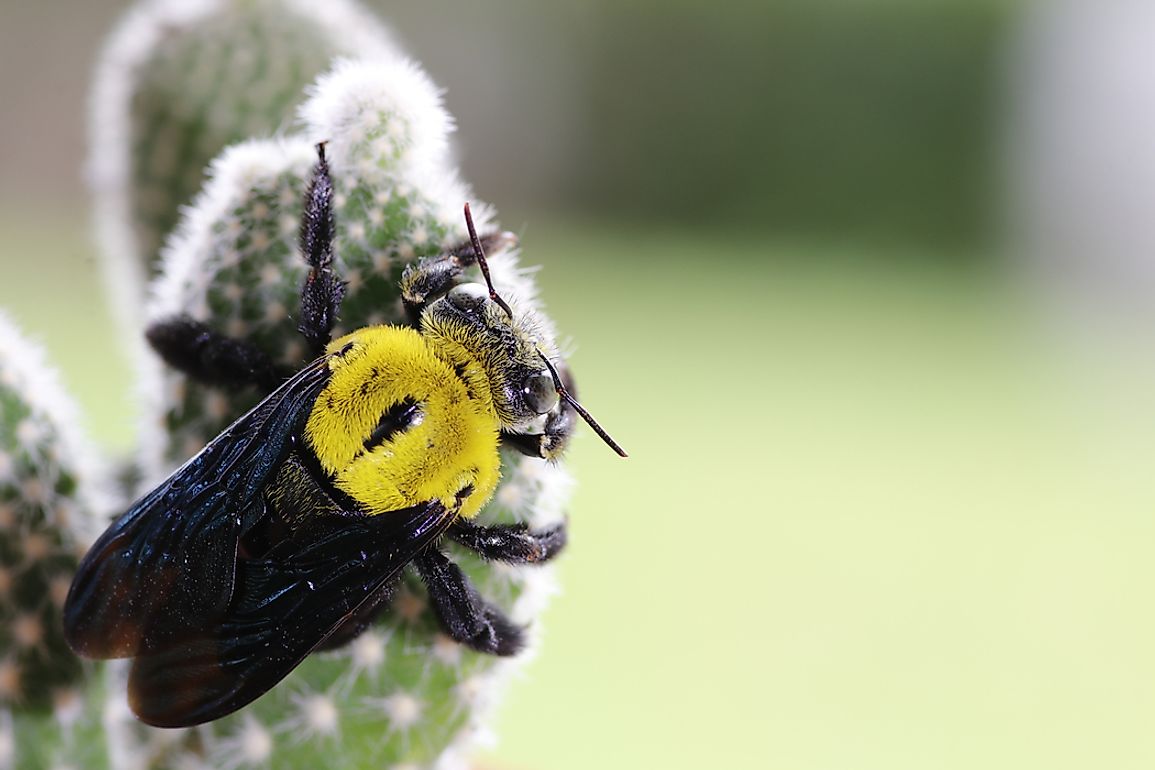Cactus Bee Facts: Animals of North America

5. Physical Description
Cactus bees (Diadasia Rinconis) are a species of bee native to the cactus bearing regions of the Southwestern United States and Northern Mexico. In terms of physical appearance, these bees possess a resemblance similar to typical honey bees. Their heads are outfitted with antennae and grey-black compound eyes. Their bodies, meanwhile, are compact, covered in fine hairs that facilitate pollen collection. Their exoskeleton is striped with golden and brown shades of color. Finally, they are made mobile by six legs and a pair of two-tiered, transparent wings. For defense, like most bees, they are each outfitted with a stinger that packs a considerable punch, making it an insect to be reckoned with, even against animals well above its own weight.
4. Diet
As their name suggests, Cactus bees turn to cactuses for breakfast, lunch, and dinner. Using the fine hair that coats their bodies, they collect pollen from the flowers of a number of species of cacti endemic to North America, such as saguaro, cholla, and a number of varieties of prickly pear. This pollen is robust in meeting their sustenance needs, possessing all of the nutrients the bees require. The pollen has everything from sugar, carbohydrates, and protein for energy, to the enzymes, vitamins, and minerals necessary to carry out their bodily functions. Cactus bees feed their larvae by packing this pollen into their burrows. The bee’s collection of this pollen is crucial to the pollination process of a great many species of cacti as well, as they serve as important germination transport vehicles between the succulent plants.
3. Habitat and Range
There are said to be species of bees in every continent except Antarctica. Cactus bees, however, are only found in the Southwestern United States and parts of Mexico. They can especially be found thriving in states like California, Nevada, Arizona, New Mexico, and Colorado. Within these areas, they can be seen darting from cactus flower to cactus flower wherever the weather is warm. Still, you shouldn't expect to follow them back to a bustling hive. In fact, Cactus bees are solitary insects that live alone in small burrows in the ground. Their solitary nature does, however, leave them more vulnerable to a number of predators, primarily species of birds common to arid climes.
2. Behavior
Cactus bees spend most of their time buzzing from flower to flower, collecting pollen. Don’t be alarmed, however, if you encounter one of these pollen-toting insects. Though their stings do pack a sizable wallop, cactus bees are unlikely to give you any trouble unless they fell they’re being threatened. Instead, they’d prefer to return to their own burrows which, during the spring cactus bloom, can be found in the thousands within bunched areas of terrain the size of several tennis courts. Therefore, next time you find yourself in the arid regions of the Southwest US in the spring, and take the chance to view some yourself, just watch where you step.
1. Reproduction
Cactus bees do not live very long lives. Not long after hatching, the male and female bees emerge from their nests. Shortly thereafter, they will be sexually mature enough to mate, at which point the female will choose a location for a new nest of her own. These nests, which are constructed entirely by the female, are composed of several compartments: one for each egg. They are each constructed from a pasty blend of cactus pollen and nectar. Once these nests are built and the eggs are laid, the females may set out to start additional nests, though many die after completing a single nest. Roughly 14-16 days later, the eggs will hatch, and process repeats itself.











